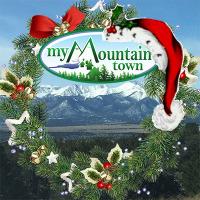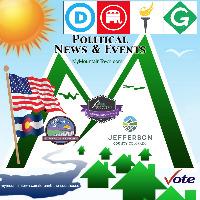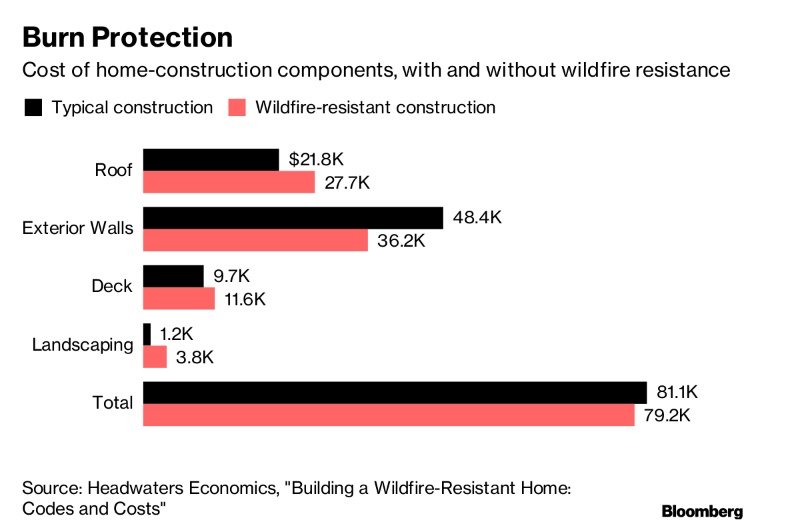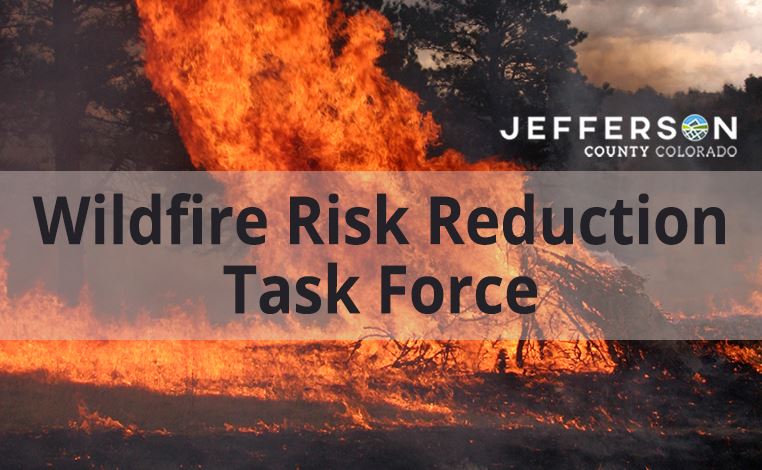- Forum
- The Highway
- The Campfire
- Jeffco Board of County Commissioners Work Session: Wildfire Risk & Mitigation
Jeffco Board of County Commissioners Work Session: Wildfire Risk & Mitigation
- MyMountainTown
-
 Topic Author
Topic Author
- Mountain Champion
-

From Jeffco CO County Government:
Learn About Wildfire Mitigation in Jefferson County
Agenda
On Tuesday, May 21, Fire Chiefs from Elk Creek Fire Department, Evergreen Fire Rescue and Inter-Canyon Fire Protection District along with the Jefferson County Sheriff's Office Emergency Management Team and Jeffco Open Space, CO staff, provided presentations on Wildfire Mitigation to the Jefferson County Board of Commissioners as part of a work session. Open Space provided information specifically about what is being done to mitigate wildfire danger at Jeffco Open Space Parks. Work Sessions conducted by the Board of County Commissioners are informal discussions to explore an issue facing the county in more depth.
In addition to the presentations, Jefferson County’s Facilities Division provided information about the county’s Slash Program. You can learn more about the Slash Program at www.jeffco.us/slash
Visit the Work Sessions page on our website for more details: www.jeffco.us/3856/Work-Sessions
For questions regarding the above Work Sessions please email This email address is being protected from spambots. You need JavaScript enabled to view it..
Timeline:
Intro - Commissioner Lesley Dahlkemper
5:50 - Presentation by Chief Bill McLaughlin and Chief Mike Weege
20:00 - Q & A
33:00 - Presentation by Jefferson County Sheriff's Office
54:30 - Presentation by Jeffco Open Space
1:09:00 Q & A
1:17:30 - Lesley Dahlkemper, International Wildland Urban Interface Building Code, Chapter 5, Economic Considerations, Moratorium on Development in Unincorporated Jeffco
1:40:00 - Lesley Dahlkemper, Wrap-Up
Video recorded by, and property of, My Mountain Town
All Rights Reserved.
Our thanks to Commissioner Dahlkemper and Julie Story, Jeffco Public Affairs, for the invitation to record the meeting, and to all the presenters for a wealth of information and positive discussion on potential collaboration moving forward to address the serious issue of wildfire risk our Foothills communities face. Please take some time to watch, send feedback to the Commissioners, and get involved in your local fire departments if you can!
Please Log in or Create an account to join the conversation.
- CanyonCourier
-

- Mountain Legend
-

- Posts: 717
- Thank you received: 10
When it comes to fire risk, the mountain area of Jefferson County tops the list. To protect the Front Range, fire chiefs and county officials agree it’s going to take a collaborative effort.
To get the ball rolling, the county commissioners on May 21 held the first joint work session on wildfire mitigation in Jeffco’s mountain communities. In addition to hearing about fire risk and mitigation from those who understand and experience it firsthand, the commissioners hoped to carve a path forward and find tangible solutions to the problem.
“None of us wants to leave anything to chance,” said Commissioner Lesley Dahlkemper, who represents much of the mountain area. “That’s for sure.”
The work session mostly served as an introductory conversation, and the commissioners are already planning additional study sessions on the wildland-urban interface code, which is designed to mitigate the risks from wildfire to life and property, and the development moratorium in Conifer requested earlier this year by the Elk Creek Fire Protection District.
Subscribe and read more here: www.canyoncourier.com/content/county-tal...fire-risk-prevention
By Deborah Swearingen
Tuesday, May 28, 2019
Canyon Courier is your source for local news, sports, events, and information in Evergreen, CO, and the surrounding area.
www.canyoncourier.com
Subscribe to help support your local news!
Please Log in or Create an account to join the conversation.
- Mountain-News-Events
-

- Mountain Legend
-

ADDENDUM TO THE 2018 JEFFERSON COUNTY BUILDING CODE AND SUPPLEMENT APPENDIX Z SPECIAL BUILDING CONSTRUCTION REGULATIONS IN WILDFIRE ZONE 1 Proposed to become effective January 1, 2020
My Mountain Town Community Calendar - filter events by Category, date, or keyword to easily find events of interest. Add your community, church, or non-profit event to the calendar yourself! Click here to access the submission form. Businesses: please contact us for more information on adding your events! Questions? Email
Community News, Events, and Calendar Forum - Check here for the latest happenings in our community and add your own!
Please Log in or Create an account to join the conversation.
- Mountain-News-Events
-

- Mountain Legend
-

Tuesday, August 27, 2019
Jefferson County is adding an addendum to the 2018 Jefferson County Building Code Supplement - Appendix Z - Special Building Construction Regulations in Wildfire Zone 1 for elevation over 6400 ft. Proposed Effective Date: January 1, 2020.
Date: August 27, 2019
Time: 11:30 AM - 1:30 PM
Location:
Jefferson County Administration Building Lookout Mountain Room
100 Jefferson County Parkway, Golden, CO 80419
Contact: 303-271-8260
Email: Please RSVP to This email address is being protected from spambots. You need JavaScript enabled to view it.
Cost: No Charge
www.jeffco.us/Calendar.aspx?EID=4921&mon...019&day=21&calType=0
My Mountain Town Community Calendar - filter events by Category, date, or keyword to easily find events of interest. Add your community, church, or non-profit event to the calendar yourself! Click here to access the submission form. Businesses: please contact us for more information on adding your events! Questions? Email
Community News, Events, and Calendar Forum - Check here for the latest happenings in our community and add your own!
Please Log in or Create an account to join the conversation.
- ScienceChic
-

- Mountain Champion
-

- Posts: 15745
- Thank you received: 320
So far, I don’t see our community being designed to be in the WUI [Wildland Urban Interface]. Our choices of what we build, how we build it, and where we build it determine our fire risk. So far, our practices are making things worse instead of better. Unless a community is designed to be in the WUI, our firefighters have no chance of protecting it." ~Gary Barrett, Elk Creek Fire Protection District, Board of Directors
Why are building codes improvements needed? According to the Insurance Institute for Business & Home Safety (IBHS), the ignition of about 90% of homes in a wildfire is due to embers coming off of the fire, or secondary fires started by embers, not the main fire front itself. They've simulated tests of different building materials, landscaping, and other structure features and found that it makes a significant difference in which materials are used and how close flammable materials are to your home in it catching fire. Requiring the use of the most flame-resistant can make all the difference; what's more, studies have been done showing that the cost isn't significantly hire to do so (sources in next post). Watch the videos below:
Building Vulnerability to Ember Exposure - 2013 IBHS Demo
IBHS Wildfire Demo 2019 - Why Did Only One Side of This Home Burn?
IBHS - Ember Characteristics
STUDY: HOME WILDFIRE RESISTANCE STARTS WITH DEFENSIBLE SPACE AND PROPER MATERIALS
A recent side-by-side comparison at the IBHS Research Center shows how builders can construct more fire-resistant homes.
By Symone Garvett, Builder | April 12, 2019
Researchers at IBHS have been working for years to determine ways to combat the devastation caused by these fires. A recent demonstration looked into what causes homes to ignite during a wildfire. Through research and real-life demonstrations, the organization found that roughly 90% of homes and buildings damaged or destroyed in a wildfire were first ignited by embers or other fires set by embers, and not the actual wildfire front.
During a wildfire, these embers, or fire brands, can fly for miles and start a new fire when they land, says Daniel Gorham, research engineer at IBHS. If they get inside a home through vents or an open window or land on dead landscaping, dry wood, or common home building materials, houses become extremely at risk.
“These wildfires are becoming far more severe,” says Wright. “Yet there are practical steps that can be taken by individual property owners, community planners, and state and federal leaders to reduce our collective risk from wildfire and make our neighborhoods safer and more resilient.”
‘The weakest link’: Why your house may burn while your neighbor’s survives the next wildfire
By Dale Kasler and Phillip Reese, Sacramento Bee | April 11, 2019
The arc of destruction the Camp Fire carved through Paradise was seemingly random: Why were some houses saved and others incinerated? As millions of Californians brace for another wildfire season, a McClatchy analysis of fire and property records shows the answer might be found in something as simple as the roofs over their heads — and the year their house was built.
A landmark 2008 building code designed for California’s fire-prone regions — requiring fire-resistant roofs, siding and other safeguards — appears to have protected the Carrells’ home and dozens of others like it from the Camp Fire. That year marks a pivotal moment in the state’s deadly and expensive history of destructive natural disasters.
All told, about 51 percent of the 350 single-family homes built after 2008 in the path of the Camp Fire were undamaged, according to McClatchy’s analysis of Cal Fire data and Butte County property records. By contrast, only 18 percent of the 12,100 homes built prior to 2008 escaped damage.
"Now, more than ever, the illusions of division threaten our very existence. We all know the truth: more connects us than separates us. But in times of crisis the wise build bridges, while the foolish build barriers. We must find a way to look after one another as if we were one single tribe.” -King T'Challa, Black Panther
The truth is incontrovertible. Malice may attack it. ignorance may deride it, but in the end, there it is. ~Winston Churchill
Please Log in or Create an account to join the conversation.
- ScienceChic
-

- Mountain Champion
-

- Posts: 15745
- Thank you received: 320
A new home built to wildfire-resistant codes can be constructed for roughly the same cost as a typical home.
Headwaters Economics
November 2018
This study find negligible cost differences between a typical home and a home constructed using wildfire-resistant materials and design features. Decades of research and post-fire assessments have provided clear evidence that building materials and design, coupled with landscaping on the property, are the most important factors influencing home survivability during a wildfire.
- Wildfire disasters will be more common if unmitigated home development continues in the wildland-urban interface.
- A new home built to wildfire-resistant codes can be constructed for roughly the same cost as a typical home.
- Costs vary for retrofitting an existing home to be wildfire-resistant, with some components such as the roof and walls having significant expense. Some of these costs can be divided and prioritized into smaller projects.
- Technology and standards exist today that will make communities safer. Cities, counties, and other jurisdictions can implement wildfire-resistant building codes to reduce their vulnerability to wildfire.
Today, one-third of all U.S. homes are in the wildland-urban interface, the area where flammable vegetation and homes meet or intermingle. And with more than 35,000 structures lost to wildfire in the last decade, more communities should consider adopting building codes that require new home construction to meet wildfire-resistant standards.
While codes and standards have been developed for building in wildfire-prone lands, the perceived cost of implementing such regulations is a commonly cited barrier to consideration and adoption by some communities. However, little research has previously examined how much it would actually cost the homeowner or builder to comply with such regulations.
For this research, a full report, an executive summary, and appendix (Excel) are available. The work was completed in partnership with The Insurance Institute for Business & Home Safety (IBHS) and was prepared at the request of Park County, Montana, as part of the Community Planning Assistance for Wildfire (CPAW) program. CPAW is a program of Headwaters Economics and is funded by the U.S. Forest Service, the LOR Foundation, and other private foundations.
Research Finds Fire-Resistant Building Codes Do Not Raise Home Prices
By Christopher Flavelle, Insurance Journal | November 27, 2018
Homes in wildfire-prone areas around the U.S. could be built to better withstand blazes without increasing the cost of construction, according to a new report.
The research released Tuesday was sponsored in part by the insurance industry and marks the first attempt to quantify the expenses associated with building residences that meet stringent flame-resistant criteria. Few states have adopted such codes, often citing housing costs, but the new findings suggest fire-plagued communities could curb damage and save lives with minimal effect on home buyers.
International Wildland Urban Interface Code (IWUIC)
"Now, more than ever, the illusions of division threaten our very existence. We all know the truth: more connects us than separates us. But in times of crisis the wise build bridges, while the foolish build barriers. We must find a way to look after one another as if we were one single tribe.” -King T'Challa, Black Panther
The truth is incontrovertible. Malice may attack it. ignorance may deride it, but in the end, there it is. ~Winston Churchill
Please Log in or Create an account to join the conversation.
- Mountain-News-Events
-

- Mountain Legend
-

Wildfire Risk Reduction Task Force - Apply By Oct. 4!
Do you have an interest in helping to reduce wildfire danger in Jefferson County? Do you want to serve on a new task force that will be working to mitigate wildfire danger? If you answered yes to either of these questions, please consider applying for the Wildfire Risk Reduction Task Force! Applications are due by Friday, Oct. 4, you can apply through the online form.
More than two-thirds of Jefferson County is within a designated Wildfire Hazard Overlay District, which establishes additional criteria for development. Additionally, the county ranks number one in Colorado in terms of the number of homes in high and extreme wildfire risk areas, according to Verisk/ISO Stateline Report - with Evergreen and Conifer ranking among the highest risk areas. At the same time, the County and some local mountain area fire departments are facing finite resources for mitigation and response.
To ensure a thoughtful, collaborative approach, and to address the challenges facing all, the Jefferson County Board of County Commissioners have agreed to lead and serve as a convener by establishing the Jefferson County Risk Reduction Task Force.
Learn more about the task force on the Board of County Commissioners website.
www.jeffco.us/CivicAlerts.aspx?AID=960Wildfire Risk Reduction Task Force
The Task Force will meet monthly, beginning November, 2019 and will access the status of their work in November, 2020 to determine what, if any, tasks remain and the potential scope of work in year two (November 2020-21). Meetings will typically be held the third Thursday from 9:00am - 10:30am. Meeting schedule, agendas and minutes can be found here.
Membership will consist of almost 30 individuals representing County leadership and staff; mountain area fire chiefs, fire fighters, liaisons; and, County business leaders and mountain area community leaders.
Applications are now open, if you are interested on serving on the Task Force as a business leader or mountain area community leader, please complete an application no later than October 4, 2019. The Board will review and appoint three individuals for each area to the Task Force mid- to late October.
My Mountain Town Community Calendar - filter events by Category, date, or keyword to easily find events of interest. Add your community, church, or non-profit event to the calendar yourself! Click here to access the submission form. Businesses: please contact us for more information on adding your events! Questions? Email
Community News, Events, and Calendar Forum - Check here for the latest happenings in our community and add your own!
Please Log in or Create an account to join the conversation.
- CanyonCourier
-

- Mountain Legend
-

- Posts: 717
- Thank you received: 10
A new Jefferson County task force aims to bring together members of the fire service, law enforcement, the business community and more to tackle the threat of wildfire in the county.
“ ... We know wildfire is one of the single greatest threats to Jefferson County, and my feeling is that we’ve got to work collaboratively and proactively to address wildfire risk reduction,” said Commissioner Lesley Dahlkemper, who spearheaded the task force.
Among the questions that the task force hopes to delve into are: How can the county enhance collaboration? If the county was to look at improved mitigation, what would it cost? Further, it will take an inventory of what’s already being done and look at other counties to see what others are doing well.
“You can’t talk about land use issues in the mountain communities without talking about water and wildfire risk,” Dahlkemper said.
Read more here: www.canyoncourier.com/content/new-task-f...wildfire-risk-jeffco
By Deborah Swearingen
Tuesday, October 1, 2019
Canyon Courier is your source for local news, sports, events, and information in Evergreen, CO, and the surrounding area.
www.canyoncourier.com
Subscribe to help support your local news!
Please Log in or Create an account to join the conversation.
- MMT_Politics
-

- Mountain Advisor
-

- Posts: 317
- Thank you received: 4
Task Force members met monthly, beginning November 2019, and presented their recommendations to the Board on November 11, 2020. The Board expressed their gratitude for your diligent work over the last year and were supportive of moving forward with the task force’s recommendations. Members will reconvene in January 2021 to continue tackling this very important issue facing Jefferson County.
November 11, 2020 - Board of County Commissioners Briefing
Task Force Recommendations Report and Presentation
The Task Force typically meets monthly on the third Thursday at 2:00 p.m. Meeting details, including located on each agenda.
Jefferson County 2021 Wildfire Risk Reduction Task Force Meetings/Agendas
Webex Virtual Meeting Connection Details
The ultimate arbiter is the people of the Union. ~ Thomas Jefferson
Voting is the foundation act that breathes life into the principle of the consent of the governed. ~DeForest Soaries
Political Calendar
Please Log in or Create an account to join the conversation.
- Mountain-News-Events
-

- Mountain Legend
-

Thursday, March 18, 2021
To join, click jeffco.webex.com/jeffco/onstage/g.php?MT...363a7ea32972ae0bf0bf
To receive a call back, provide your phone number when you join the event, or
call the number below and enter the access code.
United States Toll +1-408-418-9388 ? Access code: 187 153 6998
Calendar Event
My Mountain Town Community Calendar - filter events by Category, date, or keyword to easily find events of interest. Add your community, church, or non-profit event to the calendar yourself! Click here to access the submission form. Businesses: please contact us for more information on adding your events! Questions? Email
Community News, Events, and Calendar Forum - Check here for the latest happenings in our community and add your own!
Please Log in or Create an account to join the conversation.
- Forum
- The Highway
- The Campfire
- Jeffco Board of County Commissioners Work Session: Wildfire Risk & Mitigation










